Did you know that you actually don’t need an amp to tune your electric guitar? That’s true! While it is certainly helpful to have an amp when you’re trying to figure out the right sound and settings for your instrument, it’s not absolutely necessary. In this guide, we will take you through the process of tuning your electric guitar without an amp. It may take a little bit of practice, but soon you’ll be able to do it like a pro!
Table of Contents
Guitar Tuners
The first thing you’ll need is a guitar tuner. You can find these online or at your local music store. There are many different types and brands of guitar tuners, so it’s important to choose one that’s right for you.
These attach to the headstock of your guitar and display the note that you’re playing on a screen or LED light. More advanced players may prefer a pedal tuner, which allows you to tune your guitar hands-free while you play.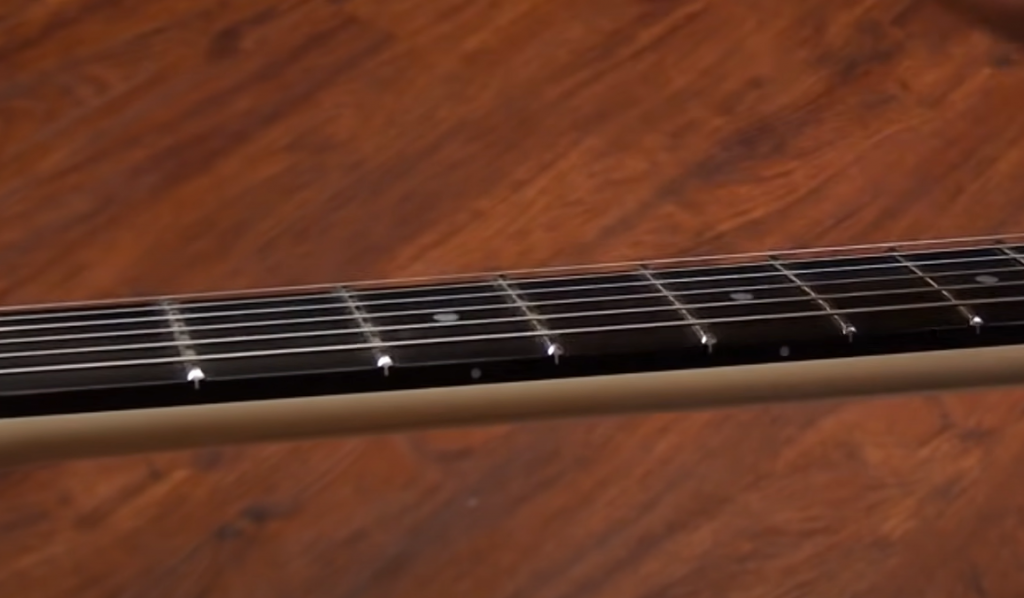
Once you have your guitar tuner, the next step is to figure out which notes you need to tune each string to.
If you’re playing a different type of guitar with a different number of strings, you’ll need to find the right tuning for your instrument. You can find tunings for all types of guitars online or in music books.Now that you know which notes you need to tune each string to, it’s time to start tuning! Begin by plucking the low E string and turning the corresponding tuning peg until the note on the tuner reads E. Once that string is in tune, move on to the A string and repeat the process. Continue until all of the strings are in tune.
If at any point you’re having trouble getting a string to match the note on the tuner, try gently pressing down on the string behind the nut (the small white piece of plastic at the end of the fretboard) with your finger while you turn the tuning peg. This technique is called “fretting” and can help get those tough-to-tune strings in pitch.
How to Tune an Electric Guitar
Now that you know how to use a guitar tuner, it’s time to learn how to tune your electric guitar without an amp! While this may seem daunting at first, it’s actually quite simple once you get the hang of it. All you need is a few household items and a little bit of patience.
First, start by unplugging your guitar from the amp. Next, find something that you can use as a make-shift bridge, like a matchbook or small piece of cardboard. Place this under the strings near the body of the guitar so that the strings are slightly elevated off of the fretboard. This will help create a clear tone when you pluck the strings.
Now, use your guitar tuner to tune each string to the correct note, as described above. Once all of the strings are in tune, you can plug your guitar back into the amp and start playing!
Tuning your electric guitar without an amp may take a little bit of practice, but it’s definitely possible. With a little patience and some trial and error, you’ll be able to get your instrument sounding great in no time. Who knows, maybe you’ll even prefer this method to using an amp!
Can you tune an electric guitar by ear?
Of course, you can tune your guitar by ear. First you need to take a note. Pick a string and play. Take note of the sound. The next string should sound in the same key as the previous one. Play at the same time. Now memorize these two sounds and try to tune your guitar further. Tuning a guitar by ear does not require anything complicated, except for a good ear for music. Try, tune your guitar and you will see how the right sound starts to appear. There’s nothing fancy about it, so if you’re wondering if a guitar can be tuned by ear, the answer is definitely yes! [5]
How can I tune my electric guitar without a tuner?
Open string tuning
On the Internet, you can easily find a recording of the sound of open guitar strings. In addition, these sounds are played in music programs.
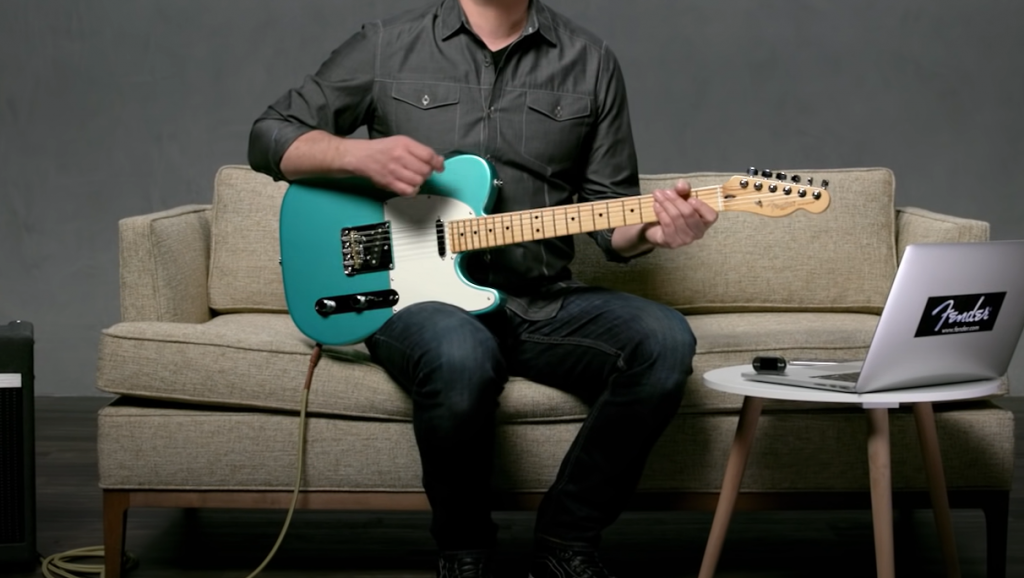
While the guitar is not in tune, discrepancies can be heard between the recorded sound and the sound of the instrument. Your task is to ensure that each string sounds in unison with the recording – so that the two sounds seem to merge into one.
Tuning with the piano
If you have a piano at home, try tuning your guitar with this instrument. You need to find the notes on the keyboard that correspond to the unclipped strings, and achieve a match in sound. If you don’t play the piano yourself, use the diagram below to determine which keys to play.
Tuning by tuning fork
A tuning fork is a device that produces a sound of a specific pitch. A wind tuning fork is useful for tuning a guitar because it produces a note when you blow into it. The fork vibrates on impact. Therefore, for him you have to free one hand.
Since the tuning fork produces only one sound – more often it is the note A (la), – it will be possible to tune only one string – the first one. To do this, hold it down on the 5th fret (the note A (la) is “hidden” there in the classical tuning) and achieve the sound of the guitar and the tuning fork in unison. To tune the 2nd string, it is also clamped at the 5th fret. When pressed, it should make an E note (mi) – it should sound the same as an open 1 string. The 3rd string is tuned in the same way, only you should press it on the 4th fret and compare it with the 2nd string. We clamp the 4th string at the 5th fret and play along with the open 3rd string, twisting the peg until the sound matches. 5 – clamp on the 5th fret and compare with the open 4. Sixth – clamp on the fifth fret and compare with the fifth string.
It sounds complicated, but this method is the most common, and every self-respecting guitarist is familiar with it, whether he is self-taught or attends guitar lessons for beginners. [3]
Why is the B string so hard to tune?
If you’re having trouble tuning the B string on your electric guitar, you’re not alone. Many players find that this string is notoriously difficult to get in tune. There are a few different reasons why this may be the case.
One possibility is that the B string is slightly thinner than the other strings on your guitar, which can make it harder to tune. Another possibility is that the B string is located next to the high E string, which vibrates at a much higher frequency. This can cause interference and make it difficult to tune the B string correctly.
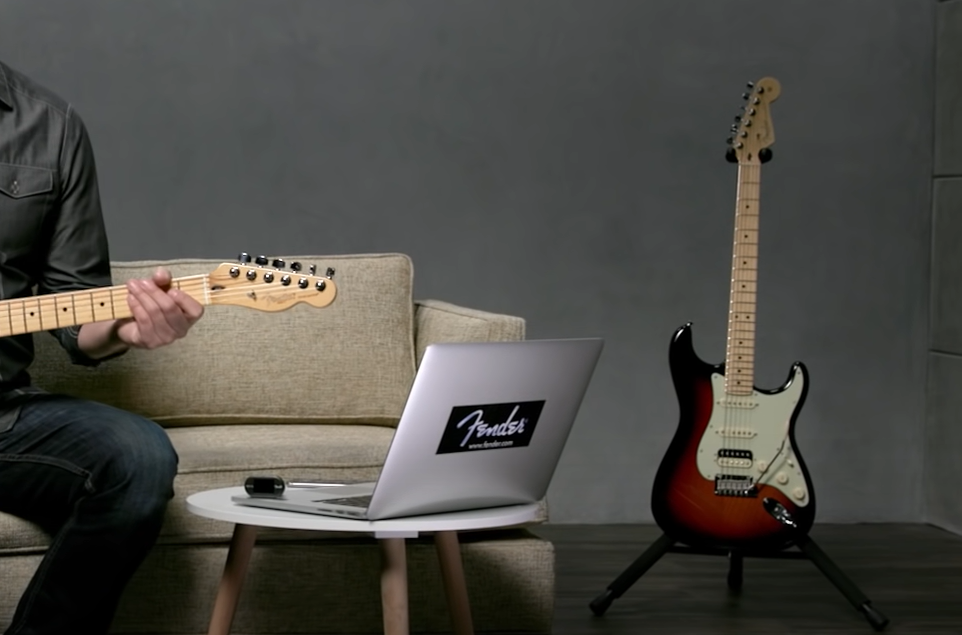
If you’re having trouble tuning the B string, don’t worry! With a little patience and practice, you’ll be able to get it sounding great in no time.
1- Tune an Electric Guitar by Listening to Harmonics
Harmonics are higher pitched notes that are produced when you place your finger lightly on a string at specific points along the fretboard and then pluck the string. You can use harmonics to tune your guitar without an amp or tuner by finding two harmonic points that are in tune with each other and then adjusting the tuning peg on one of the strings until the two notes sound exactly the same.
To find harmonic points, start by placing your finger lightly on the low E string at the fifth fret. Pluck the string and listen carefully to the note that it produces. Next, move your finger up to the seventh fret and pluck the string again. You should hear a higher-pitched note this time. These two notes are harmonic points.
Now, find another string on your guitar that’s in tune with the low E string and pluck both strings at the same time. Adjust the tuning peg on the low E string until the two notes sound exactly alike. Continue to do this until you hear that notes are aligned.
Harmonics can be quite challenging, but if you take your time, you’ll get the sound you want. With a little practice, you’ll be able to get your instrument sounding great!
2- Pitch Pipe Help to Tune an Electric Guitar
A tuning fork is a metal object that, when struck, sounds a certain note. Tuning forks can be on different notes, but often it is the note “La” of the First octave. Its frequency is 440 Hz.
You need to tune the 1st string in unison with the sound of the tuning fork, pressing it at the 5th fret. Those. you need to tighten the string by turning the peg mechanism until the tuning fork and the string sound the same, with the same frequency.
Next, you need to tune the second string on the first, third on the second, etc., i.e. use the method of tuning the guitar by adjacent strings.
Tuning a guitar on a wind tuning fork, on a whistle tuning fork – whistle
Such a tuning fork can be a whistle, blowing into which a certain note is extracted. One of the guitar strings is tuned to this sound. The adjacent string is tuned to it, and so on.
There is an option – 6 whistles in one tuning fork, each with its own string.
3- Use A Piano to Tune Electric Guitar
To start tuning, find the first octave on the piano keyboard. The note “mi” of the first octave will be the sound of the open first guitar string. Twist the peg of this string until the sound of the guitar and piano merge together. When you realize that the instruments sound in unison, then the string is tuned.
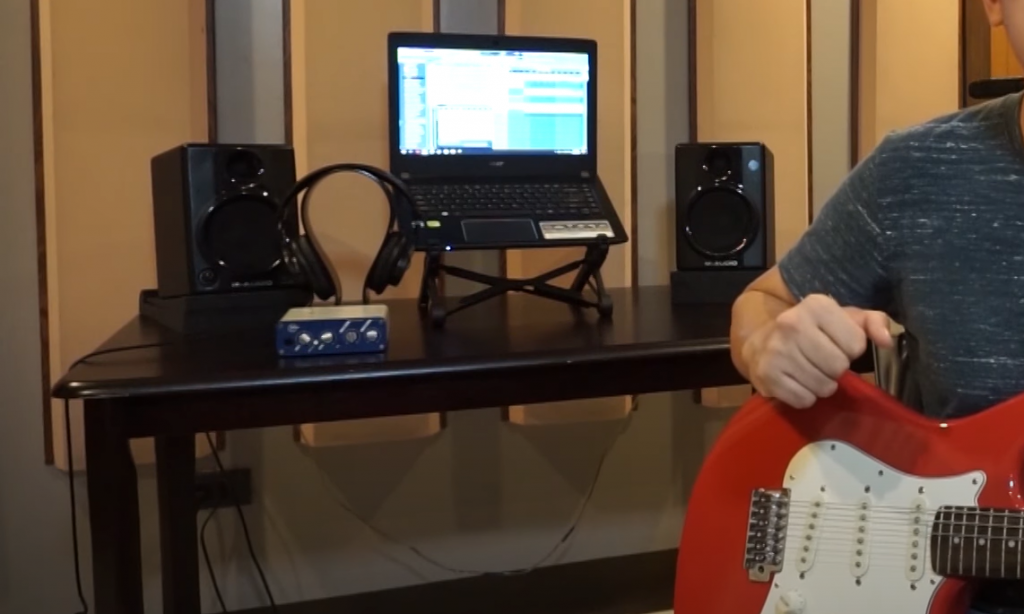
Then everything is simple – tune the rest of the strings using the first one:
The second string at the fifth fret corresponds to the open first string. When you get them to sound in unison, the first vibration will confirm the correct tuning.
The third string at the fourth fret sounds similar to the second open string.
The sound of each subsequent string at the fifth fret will be identical to the previous open one.
You can go the other way – continue tuning the guitar on the piano, finding notes on the piano keyboard and bringing the strings in unison with them.
By tuning your guitar to an acoustic or electronic piano, you train your ear. In turn, this means that learning to play the guitar will be more effective.
How Can You Keep Your Guitar Tuned for a Longer Time?
Now that you know how to tune your guitar without an amp or tuner, it’s important to learn how to keep it in tune. There are a few simple things that you can do to extend the life of your tuning:
- Use high-quality strings: High-quality strings are less likely to break and they stay in tune better than low-quality strings.
- Keep your instrument clean: A clean guitar is less likely to go out of tune. Be sure to wipe down your instrument after each use and keep it stored in a safe place when not in use.
- Get a professional setup: A professional setup can help prevent your guitar from going out of tune. During a setup, a technician will adjust the tension of the strings and the height of the bridges. This can help to keep your instrument sounding great for a longer period of time.
FAQ
Can you tune an electric guitar without it plugged in?
Yes, an electric guitar can be tuned without being plugged in. There are a few different ways that you can do this:
- Use a pitch pipe or tuning fork: Pitch pipes and tuning forks produce a reference note that you can use to tune your instrument.
- Use a piano or keyboard: Pianos and keyboards are always in tune, which makes them a great option for tuning your electric guitar.
- Use fluorescent lights: Fluorescent lights emit a low-pitched tone that can be used to tune your instrument. [2]
How do you tune a guitar manually?
Tuning a guitar is not as difficult, once you know how. To start off with this tutorial on tuning your instrument manually; first pluck the low E string and adjust its pegs until it matches up to an already known reference note (for example C).
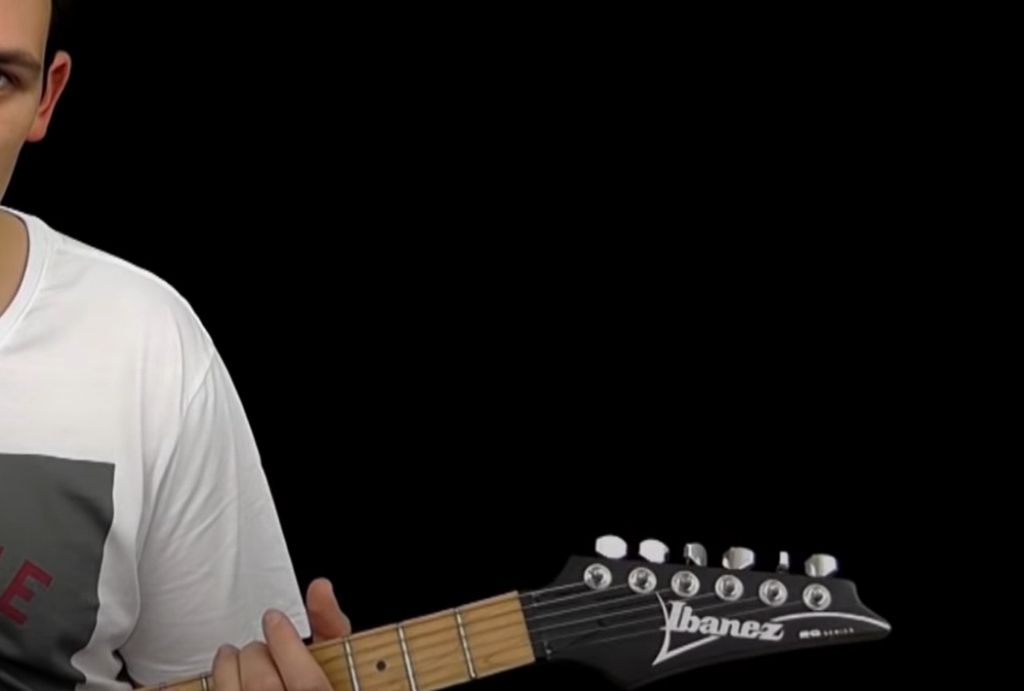
Next do exactly what was said but for each additional string in order – tune them all until they’re perfectly sounding the same together! [1]
Is it possible to tune the guitar by ear?
Tuning your guitar by ear is a lot of fun and you can do it with just about anything! The first step in tuning the string so they match up perfectly with an appropriate note, start on a low E-string. Adjusted accordingly for each individual instrument needs – try adjusting them using either piano pedals or whichever method works best depending upon what type/size nail polish pads that come included when purchasing new strings (which will vary based upon manufacturer).
Can you use a clip-on tuner for an electric guitar?
The great thing about clip-on tuners is that they’re so easy to find and use. They just attach right onto your guitar, making it simple for any guitarist who wants an accurate sound without having too many extra pieces of equipment or gadgets lying around!
With practice you can get these things sounding perfect in no time flat – well worth looking into if you play with other musicians often enough (or at least know someone else doing this). [4]
Useful Video: How to Play the Electric Guitar Without an Amp Tutorial | Ted and Kel
Conclusion
It’s not impossible to learn how to tune an electric guitar without an amp. You just have to be patient, and take your time. Follow the steps we outlined above, and you should be able to successfully tune your instrument without any trouble. Have you tried tuning your guitar this way before? What challenges did you encounter? Let us know in the comments below!
References:
- https://www.wikihow.com/Tune-a-Guitar-Without-a-Tuner
- https://guitargearfinder.com/guides/how-to-tune-guitar/
- https://www.wikihow.com/Tune-a-Guitar-Without-a-Tuner
- https://www.masterclass.com/articles/what-is-a-guitar-tuner-learn-how-to-tune-your-guitar-with-instrument-tuners
- https://www.musical-u.com/learn/how-to-tune-your-guitar-by-ear/






Leave a Reply